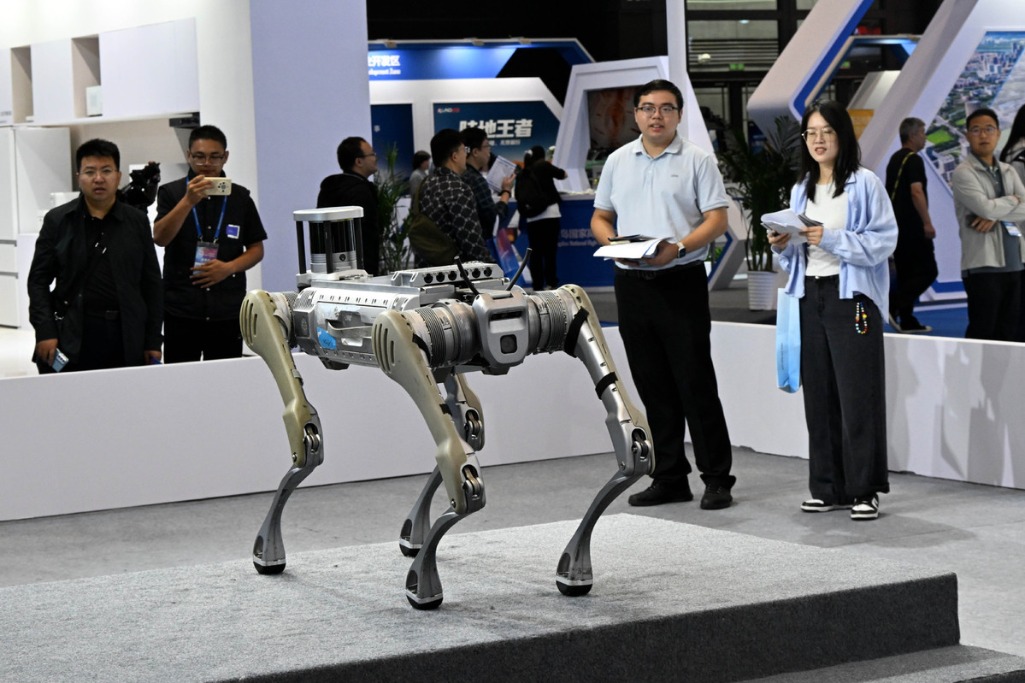High-quality growth will mark China this decade


Amid global growth slowdown, China's economy delivered a solid performance in 2019. The continual improvement in the economic structure was one of the bright spots that underpinned its high-quality development.
The gross domestic product grew 6.1 percent year-on-year to 99.09 trillion yuan ($14.38 trillion) last year, within the government's annual target of 6 to 6.5 percent, data released on Jan 17 by the National Bureau of Statistics showed.
A breakdown of the data showed that throughout the year (2019), consumption, services and emerging industries accounted for an increasing share of the economy, suggesting continued progress in the country's economic restructuring.
The value-added output of the tertiary industry expanded by 6.9 percent from the previous year to 53.42 trillion yuan, accounting for 53.9 percent of the economy.
Contribution of the tertiary industry to the economic growth stood at 59.4 percent, 22.6 percentage points higher than that of the secondary industry.
Consumption remained the Chinese economy's top growth driver, with its contribution to GDP expansion at 57.8 percent, said Ning Jizhe, head of the NBS, at the Jan 17 news conference.
Service consumption kept booming, with its proportion reaching 45.9 percent of the residents' per capita consumption expenditure, up 1.7 percentage points from the previous year.
The developing consensus view among experts is that although last month's coronavirus outbreak has put pressure on consumption growth, the impact will likely be temporary and the potential will still stay robust in the future.
With the world's largest middle-income group, China still sees large room for increase in consumption's proportion in GDP and a bigger share of service consumption in the overall consumption mix, according to Liu Qiao, dean of the Guanghua School of Management at Peking University. Services consumption would make up about 60 percent or more in China's total consumption by 2035, Liu said.
While the service industry expanded steadily in both its size and contribution to economic growth, structure of the secondary industry was also optimized thanks to the sustained efforts on industrial transformation and innovation.
In 2019, industrial output expanded 5.7 percent year-on-year, with the production in high-tech manufacturing industries and strategic emerging industries increasing by 8.8 percent and 8.4 percent, respectively.
The Jan 17 NBS data also showed that the investment in high-tech industries led to the overall fixed-asset investment growth, pointing to an improved investment structure.
Last year, the fixed-asset investment in high-tech industries registered a growth of 17.3 percent, with that in high-tech manufacturing and service sectors up 17.7 percent and 16.5 percent, respectively.
Products with high added value and independent intellectual property rights represented by electronics and information technology have gradually become new growth points and core driving forces of economic restructuring and industrial upgrading, said Zhang Monan, a research fellow at the China Center for International Economic Exchanges.
To realize high-quality development, China should increase input on innovation, promote industrial restructuring and accelerate the transformation of growth drivers, Liu said.
China will promote industrial and consumption upgrading, fully tap into the advantages of its considerable market and give play to the underpinning role of consumption and the pivotal role of investment, according to the annual Central Economic Work Conference held in December.
With China achieving its economic growth target last year, analysts said that the stable growth momentum may continue in the coming years to further improve the growth quality of the world's second-largest economy.
With the arrival of a new decade, one predictable thing about China in the 2020s is that it is shifting into a higher-quality economy that is more open and abounds with new opportunities for global businesses.
Emerging from the 2010s larger and in better shape, the Chinese economy is increasingly shaped by the growing power of consumers and the services and emerging sectors, all believed to stimulate China's huge potential in market, reform and innovation.
On the front of consumption, domestic consumers now account for over 60 percent of China's economic growth. Despite a moderation of headline GDP growth, retail sales, a major gauge of consumption, grew 8 percent year-on-year in 2019.
Analysts expect the country's consumption to be shaped by a booming middle-income group, fast urbanization and technology advances, among other trends, in the coming years.
Although large cities still contributed to a larger amount of consumption, that of lower-tier cities and rural regions continued to grow fast. A report from Morgan Stanley predicted that consumption in China's smaller cities could triple by 2030 from 2018.
"The future Chinese consumers will be richer and more tech-savvy," said Asian market analyst Angela Moh in the report. "By 2030, more than half of the population in China will either have grown up with a smartphone or be sufficiently tech-literate to benefit from the sprawling e-commerce, which is likely to remain a key driver of China's consumption."
Innovation will become another major driving force of the Chinese economy.
In the 2020 Bloomberg innovation index, China ranked 15th on the list of the world's most innovative countries, rising from 16th in 2019 and 19th in 2018. The better performance came amid China's efforts to enhance intellectual property protection, increase productivity and foster new growth drivers through innovation.
A World Bank report titled China 2030: Building a Modern, Harmonious, and Creative Society lists the country's advantages in its journey toward an innovative economy-a steep uptrend of its spending on research and development, large manufacturing sector with wide-ranging capabilities and rising supply of science and engineering skills of improving quality.
Breakthroughs in technology will usher in the next wave of economic development and new investment opportunities, and China is to climb up the value chain, said Mark Haefele, chief investment officer at UBS Global Wealth Management.
China will ramp up its competitiveness in high value-added manufacturing categories such as information technology, emerging industries and household appliances, said UBS researcher Hou Yankun.
Meanwhile, China's more favorable investment policies will help usher in more foreign investment to contribute to a more diversified economic structure.
The country will continue to shorten the negative list to ease foreign investment off-limits rules and beef up opening-up efforts in pilot free trade zones in 2020.
With the implementation of the landmark Foreign Investment Law, removal of restrictions on the manufacturing and financial sectors for foreign firms and tariff cuts, China has quickened its opening-up pace.
As its door keeps opening wider and its economy expands steadily, China is bound to make greater contributions to the global economy.
"China will play a bigger role in fueling global demand and supply," said Shao Yu, chief economist at Orient Securities.
Xinhua-China Daily




































